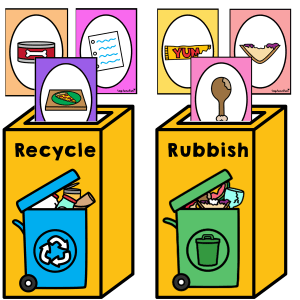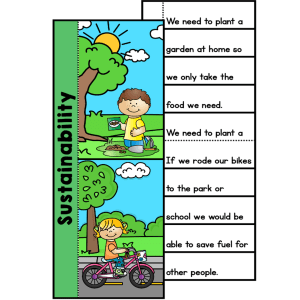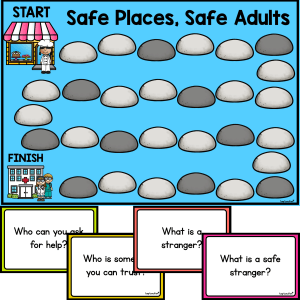Data Investigation Collection Sheets

Description
Turn your classroom into a hub of data-driven inquiry with Data Investigation Collection Sheets – a hands-on resource that empowers students to step into the role of surveyors, statisticians and researchers. Designed to introduce and reinforce foundational data skills, this resource supports students as they collect, record and interpret data gathered from their own classroom community. It’s an ideal tool for developing confidence in tallying, sorting, and reflecting on real-world data.
Students begin by selecting one of three included recording formats: a tally chart, a Venn diagram, or a yes/no chart. Each template provides a structured space for gathering responses to survey questions – whether using pre-filled categories or creating their own. This open-ended flexibility allows students to either respond to a guided question or take ownership of the data collection process by designing surveys tailored to their interests. Whether students are asking classmates about favourite fruits, weekend hobbies or preferred pets, the experience of collecting and analysing real data makes the learning meaningful and memorable.
Data Investigation Collection Sheets builds essential maths and communication skills by inviting students to engage in dialogue with their peers, interpret results, and organise data visually. The tally chart helps students practise frequency counting and summarising totals; the Venn diagram supports classification and comparison of shared and unique data points; and the yes/no chart introduces binary choice responses with space for totals. Together, these formats expose students to a range of early statistical concepts in an approachable, student-friendly format.
This resource is print-ready and designed for direct write-on use, but can also be laminated or placed in write-and-wipe sleeves for reusable, low-prep classroom rotations. The combination of structured layouts and creative freedom makes it suitable for a wide range of learners and teaching contexts – from independent tasks to guided small-group investigations.
Key Learning Outcomes:
- ✅ Develop confidence in collecting and recording data through classroom surveys
- ✅ Use tally marks, Venn diagrams and yes/no charts to visually represent information
- ✅ Compare and classify data using logical categories
- ✅ Build mathematical vocabulary around frequency, commonality and difference
- ✅ Reflect on and interpret data gathered through peer interaction
What’s Included:
- 3 types of data recording sheets:
- • Tally mark chart (blank and pre-filled options)
- • Venn diagram format (blank and themed versions)
- • Yes/No survey chart (customisable for various questions)
- Printable A4 sheets suitable for clipboards or individual workbooks
- Ideal for one-off investigations or ongoing classroom rotations
Materials Needed:
- Printed collection sheets (one per student or pair)
- Pencils or coloured markers for data recording
- Optional: clipboards for movement-based surveys
- Optional: write-and-wipe sleeves for repeated use
How to Use:
- Introduce the different data collection methods: tally charts, Venn diagrams and yes/no charts.
- Assign or have students choose a survey question to ask classmates.
- Distribute the appropriate sheet for data recording and guide students through the process.
- Once data is collected, support students in analysing their results and summarising findings.
- Challenge students to draw conclusions or share results with peers through a graph or oral presentation.
Ideas for Classroom Use:
- 💡 Use during a data collection unit to practise real-world maths
- 💡 Include in a maths rotation station for paired survey work
- 💡 Use as a transition task or brain break – survey classmates on lighthearted topics
- 💡 Pair with graphing activities to extend data interpretation
- 💡 Incorporate into cross-curricular tasks around wellbeing, community or science
Teacher Tips:
- 💛 Model how to ask a clear and concise survey question
- 💛 Guide students in interpreting overlapping responses in the Venn diagram
- 💛 Offer sentence starters for reflection: “I discovered that most people…”
- 💛 Allow early finishers to graph their collected data for bonus analysis
- 💛 Encourage the use of mathematical vocabulary when students present their results
Data Investigation Collection Sheets transforms student curiosity into confident data exploration – helping young learners build vital maths and communication skills through interactive, peer-based investigations.
Additional information
| Number of Pages | 11 |
|---|---|
| File Format | |
| Australian Curriculum Code | AC9M1ST01, AC9MFST01 |
Australian Curriculum V9
F - 6
Lorem ipsum dolor sit amet, consectetur adipiscing elit.
Lorem ipsum dolor sit amet, consectetur adipiscing elit.
Lorem ipsum/ Lorem ipsum/ Lorem ipsum
Lorem ipsum dolor sit amet, consectetur adipiscing elit.
Lorem ipsum dolor sit amet, consectetur adipiscing elit.
Lorem ipsum/ Lorem ipsum/ Lorem ipsum
Lorem ipsum dolor sit amet, consectetur adipiscing elit.
Lorem ipsum dolor sit amet, consectetur adipiscing elit.
Lorem ipsum/ Lorem ipsum/ Lorem ipsum
Lorem ipsum dolor sit amet, consectetur adipiscing elit.
Lorem ipsum dolor sit amet, consectetur adipiscing elit.
Lorem ipsum/ Lorem ipsum/ Lorem ipsum
Lorem ipsum dolor sit amet, consectetur adipiscing elit.
Lorem ipsum dolor sit amet, consectetur adipiscing elit.
Lorem ipsum/ Lorem ipsum/ Lorem ipsum





